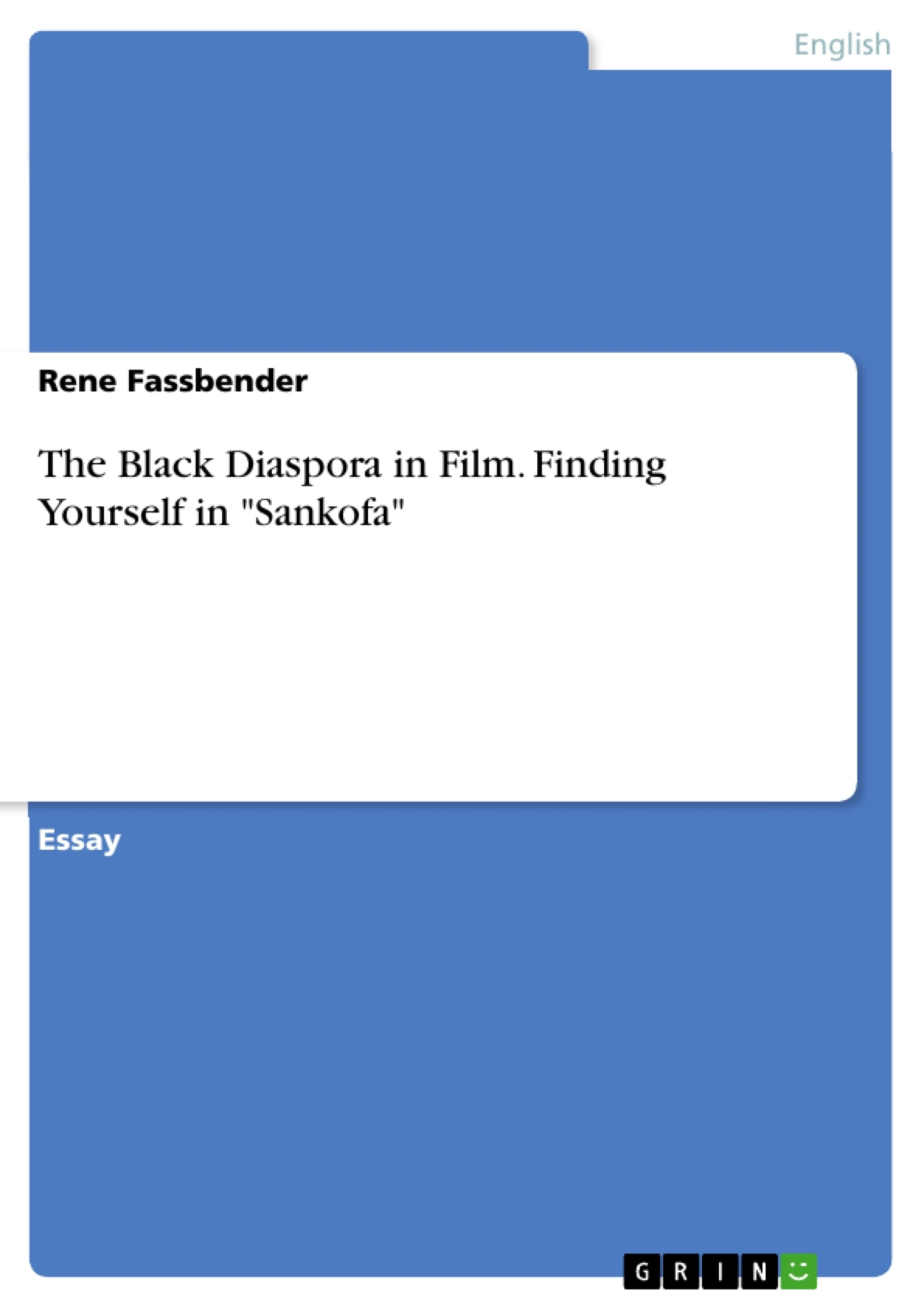The title of the movie Sankofa, directed by Haile Gerima in 1993, has been carefully chosen. Sankofa is a word from the Akan people of Ghana for a special, mythological bird, which turns its head back to hold the egg upon its back. Thus, by taking care of its egg, the future generation is ensured. The Sankofa bird has become a symbol in Ghana and other parts of west Africa which stands for the concept that one has to look back, rediscover and reclaim the past in order to face the future and move forward.
Gerima variously integrated this concept in his movie both in the outer plot, i.e. Mona’s realization of her roots in the present, and the inner plot, i.e. within her spiritual journey to the past, especially by means of Mona’s alter ego Shola and the character of Joe, who both have to undergo intensive change until they finally find and realize their true self.
So, in this essay, I will first give some background information on Haile Gerima and his motives for making a movie like Sankofa, as far as it is germane to the further theses. Then, I will focus on the characters of Mona, which involves her alter ego Shola, and Joe. I will outline how the Sankofa concept applies to their realization of their true self by means of having an in-depth look at both reasons and development of their change. How and why did the White people try to prevent them from realizing their true self and how were they able to see it in the end despite all the manipulation? In a conclusion I will point out common and differing features of their change, as well as its effect upon themselves.
Table of Contents
- Introduction
- Haile Gerima and his Motives for Sankofa
- Mona/Shola
- Assimilated Mona
- Mona becomes Shola
- Assimilated Shola
- Realization and Change
- Reborn Mona
- Joe
- Assimilated Joe
- Manipulated Christian
- Discovering his Roots
- Conclusion
Objectives and Key Themes
This essay explores the concept of self-discovery and the importance of acknowledging one's history, particularly in the context of the African Diaspora. The essay analyzes the film "Sankofa" by Haile Gerima, focusing on the characters of Mona/Shola and Joe, and how their journeys through time reveal the complex process of reconnecting with their African heritage.
- The significance of the Sankofa symbol and its application in the film.
- The impact of assimilation on the characters' self-perception and identities.
- The role of history in shaping individual and collective identity.
- The process of reclaiming one's African roots and overcoming historical trauma.
- The portrayal of slavery and its lasting consequences on individuals and communities.
Chapter Summaries
The introduction explores the symbolism of the film's title, "Sankofa," and introduces the essay's focus on the characters' journeys towards self-discovery.
The second chapter delves into the director's motivations for creating "Sankofa," highlighting Gerima's desire to shed light on the African Holocaust and encourage African Americans to confront their suppressed history.
The third chapter focuses on the character of Mona/Shola, examining her initial assimilation into Western culture and her gradual process of awakening to her African heritage.
The fourth chapter analyzes the character of Joe, who initially appears to be a devout Christian, yet ultimately discovers his own connection to African traditions.
Keywords
The key themes and concepts explored in this essay include: Sankofa, African Diaspora, self-discovery, assimilation, historical trauma, slavery, identity, African heritage, cultural awakening, and the African Holocaust.
- Quote paper
- Rene Fassbender (Author), 2005, The Black Diaspora in Film. Finding Yourself in "Sankofa", Munich, GRIN Verlag, https://www.grin.com/document/437373




